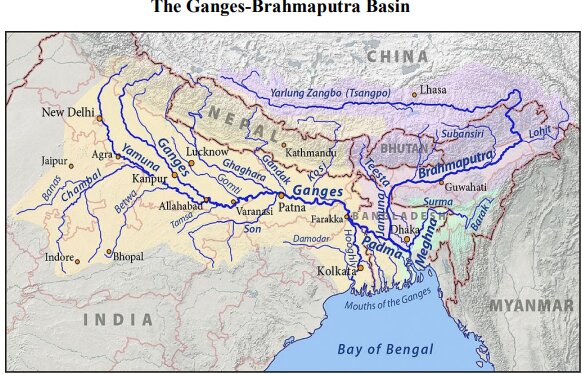Worldwide Closure of Educational Institutions due to COVID-19
Why in News
According to the estimates of the United Nations Educational, Scientific and Cultural Organization (UNESCO) the COVID-19 outbreak has pulled almost half (49.22%) the world’s student population out of schools and universities.
- UNESCO has also observed that 107 countries have announced a temporary closure of educational institutions, impacting 86.17 crore children and youth.
COVID-19
- The World Health Organisation (WHO) has named the new coronavirus disease as ‘COVID-19’.
- The new name is taken from the words "corona", "virus" and "disease", with 2019 representing the year when it emerged (the outbreak was reported to the WHO on 31st December, 2019).
- The word coronavirus refers to the group of viruses it belongs to, rather than the latest strain. The latest strain has been designated ‘Severe Acute Respiratory Syndrome Coronavirus 2 (SARS-CoV-2)’ by the International Committee on Taxonomy of Viruses.
- The World Health Organisation (WHO) has also declared COVID-19 as a pandemic.
- According to the WHO, a pandemic is declared when a new disease for which people do not have immunity spreads around the world beyond expectations.
Key Points
- Non-Pharmaceutical Interventions :
- The World Health Organisation (WHO) recommends school closure (including preschool and higher education) as one of the “Non-Pharmaceutical Interventions (NPIs)” for mitigating influenza pandemics.
- Nonpharmaceutical Interventions (NPIs) are actions, apart from getting vaccinated and taking medicine, that people and communities can take to help slow the spread of illnesses like pandemic influenza (flu).
- Reasons:
- The main reason for keeping educational institutions closed is that children and young people can be vectors of transmission.
- There are also high contact rates in schools which could result in the spread of the virus.
- The school closures during a pandemic are expected to break the chains of transmission of COVID-19 in turn it will reduce the number of confirmed cases, avoiding stressing healthcare systems.
- It will also help to delay possible transmission and will also allow more time to develop a vaccine.
- Economic Costs Involved:
- The closure of education institutions not only disrupts learning but also has a direct economic cost.
- Because when schools close, families would have to find childcare.
- While some may manage to look after children without missing work, many parents will end up skipping work. Those lost work hours are a cost to the economy.
- A study published in the BMC Public Health journal in April 2008 suggested that a 12-week closure of schools in the UK during an influenza pandemic could cost about 0.2-1% of the country’s Gross Domestic Product (GDP).
- Disadvantages:
- Loss of Nutrition: When schools close, children’s nutrition is compromised. This is already evident in India, where the closure of schools has disrupted the supply of midday meals.
- Access to Internet: As schools and universities move towards learning online to make up for lost time, students from low-income families risk falling behind as they don’t have access to technology or stable Internet connections.
- Issues with Distance Learning: The parents of first-generation learners in schools are often unprepared for distance learning and home-schooling.
- Measures:
- Countries are adopting distance learning solutions to ensure continuity of education.
- The UNESCO has set up a COVID-19 task force to advise countries in regular virtual meetings with Education Ministers.
Indian Scenario
- In India, the closure of schools started towards the end of the academic year. Hence, as of now, it hasn’t caused any significant learning loss.
- The Ministry of Human Resource Development has decided to encourage schools and universities to make full use of existing e-learning portals.
- These e-learning portals include the Massive Open Online Courses (MOOCs), platform SWAYAM, and the free DTH channel Swayam Prabha, which telecasts educational videos prepared by the NCERT.
- Massive Open Online Course (MOOC) is a free Web-based distance learning program that is designed for the participation of large numbers of geographically dispersed students.
- SWAYAM platform is indigenously developed by the Ministry of Human Resource Development (MHRD) and All India Council for Technical Education (AICTE) with the help of Microsoft.It is designed to achieve the three cardinal principles of Education Policy viz.access, equity and quality.
UNESCO
- The United Nations Educational, Scientific and Cultural Organization (UNESCO) was founded in 1945 to develop the “intellectual and moral solidarity of mankind” as a means of building lasting peace.
- It is located in Paris (France).
- It develops educational tools to help people live as global citizens free of hate and intolerance.
- It also aims to promote cultural heritage and the equal dignity of all cultures with strengthening bonds among nations.
COVID-19 and Work from Home in India
Why in News
The rising wave of the COVID-19 outbreak in India has forced the corporate world in the country to opt for ‘work from home’ widely.
- Currently, the work from home is the only viable option to continue and sustain economic activities in the country to contain the spread of COVID-19.
Key Points
- Legal Provisions:
- India’s labour laws and proposed Labour Codes do not recognise work from home as a viable work arrangement.
- An organisation is also required to maintain statutory records under various acts such as Shops and Establishment Act, Minimum Wages Act, Payment of Wages Act, Equal Remuneration Act, Payment of Bonus Act, Factories Act, and Contract Labour Regulation and Abolition Act.
- These laws regulate hours of work, payment of wages, leaves, holidays, terms of service and other conditions of work of persons employed.
- However, the above provisions assume that an employee has a fixed geography of work and does not account for an employee working from a remote location.
- Current Scenario:
- Most organisations in India do not have well documented policies and guidelines to support extended work from home arrangements.
- Also most of the managerial staff is not trained and equipped to manage remote teams.
Applicability and Computation Challenges
- Labour - a Subject on the Concurrent List:
- Under the Constitution of India, Labour is a subject in the Concurrent List where both the Central & State Governments are competent to enact legislation subject to certain matters being reserved for the Centre.
- There are 416 Labour Laws and Rules between Centre, States and Union Territories leading to 278 different filings and approximately 1,000 different formats of Registers.
- Thus, if an employee works remotely and is based in a different state, the applicable labour laws will change leading to different compliance obligations.
- States have implemented labour laws with different applicability criteria, registration and documentation requirements.
- Minimum Wages Act:
- The Minimum Wages Act 1948 is an Act of Parliament concerning Indian labour law that sets the minimum wages that must be paid to skilled and unskilled labourers.
- The different states have different minimum wages based on schedule, skill level and zone. As an example, just the state of Karnataka has over 800 different minimum wages.
- In the event of employees working remotely from different states, the complexity of wage computation will increase sharply.
- Minimum wage requirements for different states will have to be satisfied to stay compliant.
- Overtime Wage Calculations:
- An employer has to compute the wage of an employee based on the days and hours of work and maintain statutory registers as evidence.
- Overtime work hours have different slabs and statutory payment requirements.
- In a remote work arrangement, organisations will need to manage these records such that they are admissible by the Labour Department.
- Professional Tax:
- Professional tax is a tax on all kinds of professions, trades, and employment and levied based on the income of such profession, trade and employment.
- Professional Tax implementation varies between states in applicability, computation and filing requirements.
- Labour Welfare Fund
- Labour Welfare Fund is a statutory contribution managed by individual state authorities.
- In case an employee telecommutes from a different state, there are implications leading to additional registration and filings leading to higher complexity and cost of managing compliance.
Pros and Cons of Work from Home
- Pros
- Development of virtual collaboration without political as well as geographical boundaries.
- Easy balance of Professional and Personal life.
- Helps to avoid congestion problems majorly in metro cities.
- Leads a way towards a conservation of resources like fossil fuels, water,electricity,etc.
- Cons
- Reduction in productivity.
- Lack of creativity.
- Risk of isolation.
- Lack of accountability.
Way Forward
- The world economies have become increasingly connected and interdependent. Greater flexibility, adaptability and resilience will be key to the next-generation workforce.
- The implementation of technology advancements in office productivity tools, collaboration tools, digital documents, flexible workflows, cheaper broadband connectivity will continue to make work from home easier.
- The proposed labour codes in India are expected to acknowledge gig, informal and unorganised labour in addition to work from home as a legal option.
- The government is also expected to make a regulatory framework to enable teleworking, organisations should understand the implications of work from home during the ongoing crisis and ensure that they inadvertently do not miss critical compliances.
Schemes Approved to Promote Drug Manufacturing
Why in News
- Recently, the Union Cabinet has approved two schemes, namely the scheme on Promotion of Bulk Drug Parks and Production Linked Incentive (PLI) Scheme to promote domestic manufacturing of critical Key Starting Materials/Drug Intermediates and Active Pharmaceutical Ingredients in the country.
Key Points
Promotion of Bulk Drug Parks Scheme
- Number of Parks: The government aims to develop 3 mega Bulk Drug parks in India in partnership with States.
- Funding: Government of India will give Grants-in-Aid to States with a maximum limit of Rs. 1000 Crore per Bulk Drug Park.
- A sum of Rs. 3,000 crore has been approved for this scheme for next 5 years.
- Facilities: Parks will have common facilities such as solvent recovery plant, distillation plant, power & steam units, common effluent treatment plant etc.
- Need of the Scheme: Despite being 3rd largest in the world by volume the Indian pharmaceutical industry is significantly dependent on import of basic raw materials, viz., Bulk Drugs that are used to produce medicines. In some specific bulk drugs the import dependence is 80 to 100%.
- Objectives: The scheme is expected to reduce manufacturing cost of bulk drugs in the country and dependency on other countries for bulk drugs.
- The scheme will also help in providing continuous supply of drugs and ensure delivery of affordable healthcare to the citizens.
- Implementation: The scheme will be implemented by State Implementing Agencies (SIA) to be set up by the respective State Governments.
Production Linked Incentive (PLI) Scheme
- Aim: The PLI scheme aims to promote domestic manufacturing of critical Key Starting Materials (KSMs)/Drug Intermediates and Active Pharmaceutical Ingredients (APIs) in the country.
- Funding: Under the scheme financial incentive will be given to eligible manufacturers of identified 53 critical bulk drugs on their incremental sales over the base year (2019-20) for a period of 6 years.
- Impact: PLI scheme will reduce India's import dependence on other countries for critical KSMs/Drug Intermediates and APIs.
- This will lead to expected incremental sales of Rs.46,400 crore and significant additional employment generation over 8 years.
- Implementation: The scheme will be implemented through a Project Management Agency (PMA) to be nominated by the Department of Pharmaceuticals.
Active Pharmaceutical Ingredients (APIs)
- APIs, also called bulk drugs, are significant ingredients in the manufacture of drugs. The Hubei province of China is the hub of the API manufacturing industry.
- India is heavily import-dependent for APIs from China. India’s API imports stand at around $3.5 billion per year, and around 70%, or $2.5 billion, come from China.
Ayush Wellness Centres under National Ayush Mission
Why in News
Recently, the Union Cabinet has approved the inclusion of AYUSH Health and Wellness Centres (AYUSH HWCs) in the National AYUSH Mission (NAM).
- AYUSH HWC is a component of the Ayushman Bharat.
Background
- The National Health Policy 2017 advocated for mainstreaming the potential of AYUSH systems (Ayurveda, Yoga & Naturopathy, Unani, Siddha, Sowa-rigpa and Homoeopathy) within a pluralistic system of integrative healthcare.
- In 2018, the Government of India decided that 1.5 lakh health & wellness Centres would be created by transforming existing sub-health centres and primary health centres to deliver comprehensive primary health care.
- So, it was decided that the Ministry of AYUSH would operationalize 10% of the total sub-health centres as HWCs under Ayushman Bharat.
Key Points
- Cost and time:
- Expenditure- ₹3399.35 Crore (with a ratio of almost 2:1 between the centre and the states respectively)
- Time- Within a period of five years from 2019-20 to 2023-24.
- AYUSH HWCs operating under NAM will have the following objectives:
- To establish a holistic wellness model based on AYUSH principles and practices focusing on preventive, promotive, curative, rehabilitative and palliative healthcare by integration with the existing public health care system.
- To provide informed choice to the public in need, by making the AYUSH services available.
- To spread community awareness about lifestyle, yoga, medicinal plants and provision of medicines for selected conditions as per strength of AYUSH systems.
- After consulting with the States/UTs, Ministry of Health and Family Welfare and other ministries involved, the Ministry of AYUSH has proposed two models for operationalization of AYUSH HWCs:
- Upgradation of existing AYUSH dispensaries.
- Upgradation of existing Sub Health Centres (SHCs).
- Benefits:
- Enhanced accessibility to achieve universal health coverage for affordable treatment.
- Reduced burden on secondary and tertiary health care facilities.
- Reduced out of pocket expenditure due to self-care model.
- Integration of AYUSH in implementation of Sustainable Development Goal (SDG) 3 (Good Health and Well-being), as mandated by the NITI Aayog.
- Validated holistic wellness model in target areas.
National Health Policy, 2017
- It seeks to reach everyone in a comprehensive integrated way to move towards wellness.
- It aims at achieving universal health coverage and delivering quality health care services to all at affordable cost.
National AYUSH Mission
- It was launched by the Department of AYUSH under the Ministry of Health and Family Welfare, during the 12th Plan for implementation through States/UTs.
- Objectives:
- To promote AYUSH medical systems through cost effective AYUSH services.
- To strengthen the educational systems.
- To facilitate the enforcement of quality control of Ayurveda, Siddha, Unani and Homoeopathy (ASU&H) drugs and sustainable availability of the raw-materials needed in them.
- It envisages flexibility of implementation of the programmes which will lead to substantial participation of the State Governments/UT.
- Elements of the National AYUSH Mission:
- Obligatory Components
- AYUSH Educational Institutions.
- AYUSH Services.
- Medicinal Plants Quality Control of ASU&H Drugs.
- Flexible Components
- AYUSH Wellness Centres comprising Yoga and Naturopathy.
- Tele-medicine.
- Obligatory Components
India-France Joint Patrolling
Why in News
For the first time, India and France conducted joint patrols from the Reunion Island.
- The patrol was conducted in the month of February by a P-8I aircraft with French Navy personnel onboard.
- Boeing’s P-8A Poseidon is designed for long-range Anti-Submarine warfare (ASW), Anti-Surface Warfare (ASuW), and intelligence, surveillance and reconnaissance (ISR) missions.
- The P-8s Indian variant is referred to as P-8I.
- Of a total of 12 ordered aircrafts, India has received eight, making the Indian Navy's P-8 fleet the second largest in the world. Another four aircrafts are on-schedule to be delivered in 2020.
- The P-8I is not just responsible for coastal patrolling but is also used for other critical missions like search-and-rescue, anti-piracy, and supporting operations of other arms of the military.
Key Points
- Currently, under the ‘Neighbourhood First’ policy and broader maritime cooperation, the Indian Navy undertakes joint Exclusive Economic Zone (EEZ) surveillance with Maldives, Seychelles and Mauritius and Coordinated Patrols (CORPATs) with Bangladesh, Myanmar, Thailand and Indonesia.
- The objectives of the CORPATs are to ensure effective implementation of United Nations Conventions on Laws of the Sea (UNCLOS).
- UNCLOS specifies regulations regarding protection and conservation of natural resources, conservation of marine environment, prevention and suppression of illegal, unregulated fishing activity, drug trafficking, piracy, exchange of information in prevention of smuggling, illegal immigration and conduct of search and rescue operations at sea.
- The joint patrolling with France shows India’s intent to engage with friendly foreign partners in expanding its footprint in the Indian Ocean, focusing on the stretch between the East African coastline and the Malacca straits.
- India has recently become an observer to the Indian Ocean Commission. It consists of Reunion as one of its members.
- India has so far carried out CORPATs only with maritime neighbours and had rejected a similar offer by the US in 2016.
India- France Defence Relations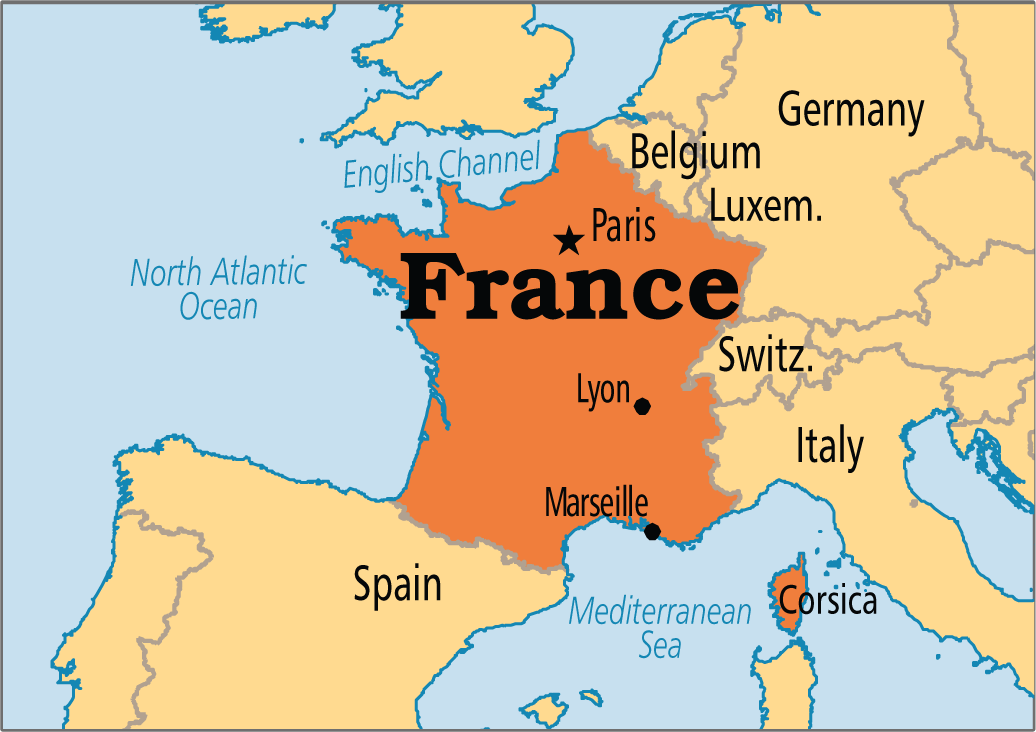
- France is the first country to deploy a Liaison Officer at the Indian Navy’s Information Fusion Centre (IFC-IOR) as part of efforts to improve Maritime Domain Awareness (MDA).
- France has steadily emerged as a major strategic partner for India with big ticket defence deals and increased military to military engagement.
- The Indian navy is currently inducting French Scorpene conventional submarines, being built in India under technology transfer, and the Indian Air Force will soon get the first batch of its 36 Rafale fighter jets.
- India is working with France to develop strategic and economic partnership involving Madagascar, Reunion Islands-Comoros so as to balance the growing influence of China in that part of the Indian Ocean Region.
- Defence Exercises between India and France:
- Varuna – Naval exercise
- Garuda – Air exercise
- Shakti – Army exercise
- Gagan Shakti is conducted by the Indian Air Force to showcase its air dominance over the entire extended area of the Indian Ocean Region. It includes all terrain operations – desert, high altitude, maritime scenarios and special operations – in real time with specific focus on key areas like aerial combat, air to surface combat, paratrooper assault and medical evacuation.
- Garuda Shakti is the joint military exercise between India and Indonesia.
- Mitra Shakti is the joint military exercise between India and Sri Lanka.
Reunion Island
- Réunion is a French overseas department and overseas region in the western Indian Ocean. It is located about 420 miles (680 km) east of Madagascar and 110 miles (180 km) southwest of Mauritius.
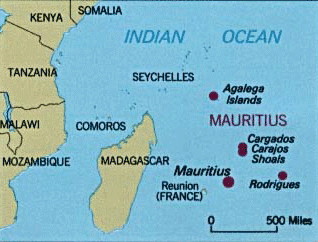
Extradition Treaty between India and Belgium
Why in News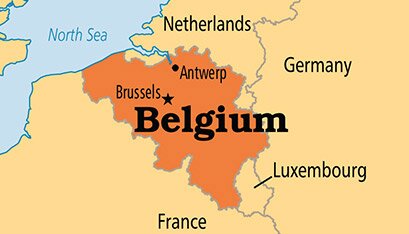
Recently, the Union Cabinet has approved the signing and ratifying of the Extradition Treaty between the Republic of India and the Kingdom of Belgium.
- This will replace the pre-Independence Extradition Treaty between Great Britain and Belgium of 1901 that was made applicable to India through the exchange of Letters in 1958.
- The Treaty provides a legal framework for seeking extradition of terrorists, economic offenders, and other criminals from and to Belgium.
Extradition
- It is the formal process of one state surrendering an individual to another state for prosecution or punishment for crimes committed in the requesting country's jurisdiction.
- This is generally enabled through a bilateral or multilateral treaty.
- The legal basis for extradition with countries with whom India does not have an Extradition treaty is provided by Section 3 (4) of the Indian Extradition Act, 1962.
Salient Features of the Treaty
- Obligation to Extradite: Each Party agrees to extradite to the other any person found in its territory, who is accused or convicted of an extraditable offence in the territory of the other Party.
- However, extradition of nationals is discretionary. The nationality will be determined at the time the offence was committed.
- Extraditable Offences
- An extraditable offence means an offence punishable under the laws of both the Parties with imprisonment for a period of one year or more severe punishment.
- Offences relating to taxation, or revenue or is one of a fiscal character also fall within the scope of this Treaty.
- Mandatory Grounds for Refusal Under the Treaty:
- The offence involved is a political offence.
- The offence is a military offence.
- The request for prosecution has been made on account of his race, sex, religion, nationality or political opinion.
Electronics Manufacturing Clusters (EMC2.0) Scheme
Why in News
Recently, the Union Cabinet has approved financial assistance to the Modified Electronics Manufacturing Clusters (EMC 2.0) Scheme.
- EMC 2.0 is a scheme for development of world class infrastructure along with common facilities and amenities through Electronics Manufacturing Clusters (EMCs).
Background
- The Ministry of Electronics and Information Technology (MeitY) notified the Electronics Manufacturing Clusters (EMC) Scheme in October, 2012.
- The objective of the scheme was to provide support for creation of world class infrastructure for attracting investments in the Electronics Systems Design and Manufacturing (ESDM) sector.
- The scheme provided grant assistance for setting up of both Greenfield and Brownfield EMCs across the country.
- For projects in Greenfield Electronics Manufacturing Clusters, assistance is provided to the extent of 50% of the project cost subject to a ceiling of Rs. 50 crore for every 100 acres of land.
- For Brownfield EMCs, 75% of the cost of infrastructure is provided, subject to a ceiling of Rs. 50 crore.
- Under the scheme, 20 Greenfield EMCs and 3 Common Facility Centres (CFCs) have been approved in 15 states across the country.
- There was a need for EMC 2.0 for further strengthening the infrastructure base for the electronics industry in the country and deepening the electronics value chain. Thus, EMC 2.0 was approved.
Key Features of the EMC 2.0
- The Modified Electronics Manufacturing Clusters (EMC 2.0) Scheme is in line with National Policy for Electronics (NPE), 2019 to make India a global hub for mobile and component manufacturing.
- The scheme would support setting up of Electronics Manufacturing Clusters (EMCs).
- The focus is on development of basic infrastructure, amenities and other common facilities for the ESDM sector.
- The scheme would also support setting up of Common Facility Centres (CFCs).
- They would be set up in an area where a significant number of existing manufacturing units are located.
- The focus is on upgrading common technical infrastructure and providing common facilities for the units in EMCs, Industrial Areas/Parks/industrial corridors.
Expected Benefits
- A robust infrastructure base for the electronic industry.
- New investments in the Electronics System Design and Manufacturing (ESDM) sector.
- Increased employment opportunities in manufacturing units.
- Revenue in the form of taxes paid by the manufacturing units.
- Help development of the entrepreneurial ecosystem.
- Drive innovation and catalyze the economic growth of the country.
Electronic Production in India
- India’s electronics production has increased from Rs. 1,90,366 crore (US$29 billion) in 2014-15 to Rs. 4,58,006 crore (US$ 70 billion) in 2018-19, at a Compound Annual Growth Rate (CAGR) of about 25%.
- India’s share in global electronics manufacturing grew from 1.3% (2012) to 3.0% (2018). Electronics production accounts for 2.3% of India’s GDP at present.
Martyrs’ Day
Why in News
Every year, March 23 is observed as Martyrs’ Day as a tribute to freedom fighters Bhagat Singh, Sukhdev Thapar, and Shivaram Rajguru.
- The Day is also known as Shaheed Diwas or Sarvodaya Day.
- This Day should not be confused with the Martyrs’ Day observed on January 30, the day Mahatma Gandhi was assassinated.
Key Points
- Bhagat Singh, Sukhdev Thapar, and Shivaram Rajguru died on March 23 in 1931.
- They were hanged to death for assassinating John Saunders, a British police officer in 1928. They had mistook him for British police superintendent James Scott.
- It was Scott who had ordered lathi charge, which eventually led to the death of Lala Lajpat Rai.
- Their lives inspired countless youth and in their death, they set an example. They carved out their own path for independence where individual heroism and their aggressive need to do something for the nation stood out, departing from the path followed by the Congress leaders then.
Bhagat Singh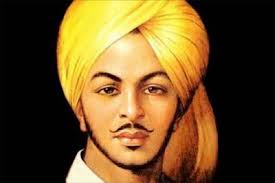
- Born as Bhaganwala on the 26th September, 1907, Bhagat Singh grew up in a petty-bourgeois family of Sandhu Jats settled in the Jullundur Doab district of the Punjab.
- He belonged to a generation that was to intervene between two decisive phases of the Indian national movement - the phase of the 'Extremism' of Lal-Bal-Pal and the Gandhian phase of nonviolent mass action.
- In 1923, Bhagat Singh joined the National College, Lahore which was founded and managed by Lala Lajpat Rai and Bhai Parmanand.
- The College was set up as an alternative to the institutions run by the Government, bringing to the field of education the idea of Swadeshi.
- In 1924 in Kanpur, he became a member of the Hindustan Republican Association, started by Sachindranath Sanyal a year earlier. The main organiser of the Association was Chandra Shekhar Azad and Bhagat Singh became very close to him.
- It was as a member of the HRA that Bhagat Singh began to take seriously the philosophy of the Bomb.
- Armed revolution was understood to be the only weapon with which to fight British imperialism.
- In 1925, Bhagat Singh returned to Lahore and within the next year he and his colleagues started a militant youth organisation called the Naujawan Bharat Sabha.
- In April 1926, Bhagat Singh established contact with Sohan Singh Josh and through him the 'Workers and Peasants Party' which brought out the monthly magazine Kirti in Punjabi.
- For the next year Bhagat Singh worked with Josh and joined the editorial board of Kirti.
- In 1927, he was first arrested on charges of association with the Kakori Case accused for an article written under the pseudonym Vidrohi (Rebel). He was also accused of being responsible for a bomb explosion at Lahore during the Dussehra fair.
- In 1928, Bhagat Singh changed the name of Hindustan Republican Association to Hindustan Socialist Republic Association (HSRA). In 1930, when Azad was shot, the HSRA collapsed.
- Naujawan Bharat Sabha replaced HSRA in Punjab.
World Water Day
Why in News
World Water Day is observed on 22 March every year. It focuses on the importance of freshwater.
Key Points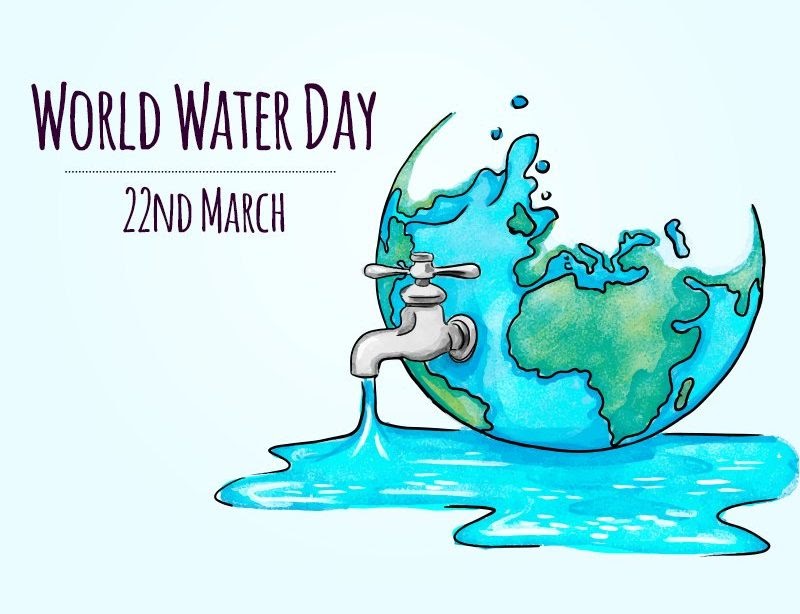
- The World Water Day has been observed since 1993 and intends to raise awareness of the 2.2 billion people living without access to safe water.
- The theme for 2020 is ‘Water and Climate Change’ which aims to explore interrelation between water and climate change.
- A core focus of World Water Day is to support the achievement of Sustainable Development Goal (SDG) 6: water and sanitation for all by 2030.
- In addition to it, the International Decade for Action on Water for Sustainable Development (2018-2028) is being observed.
- These observances serve to reaffirm that water and sanitation measures are key to poverty reduction, economic growth, and environmental sustainability.
Note:
- 22 March: World Water Day
- 22 April: Earth Day
- 22 May : World Biodiversity Day
Olive Ridley Turtle
Why in News
- Recently, mass nesting of Olive Ridley Turtles started at Odisha’s Rushikulya rookery coast.
- The Rushikulya rookery on the coast of Odisha in India is the largest mass nesting site for the Olive-ridley, followed by the coasts of Mexico and Costa Rica.
Key Points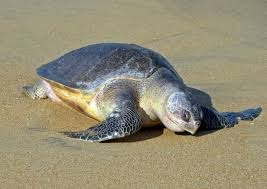
- Features: The Olive ridley turtles are the smallest and most abundant of all sea turtles found in the world.
- These turtles are carnivores and get their name from their olive colored carapace.
- Habitat: They are found in warm waters of the Pacific, Atlantic and Indian oceans.
- Migration: They migrate thousands of kilometers between feeding and mating grounds in the course of a year.
- Arribada (Mass Nesting): They are best known for their unique mass nesting called Arribada, where thousands of females come together on the same beach to lay eggs.
- They lay their eggs over a period of five to seven days in conical nests about one and a half feet deep which they dig with their hind flippers.
- Threats: They are extensively poached for their meat, shell and leather, and their eggs. However, the most severe threat they face is the accidental killing through entanglement in trawl nets and gill nets due to uncontrolled fishing during their mating season around nesting beaches.
- Protection Status and Steps Taken: The species is recognized as Vulnerable by the IUCN Red list, they are also protected under CITES Appendix I. They are also listed on Schedule – I of the Indian Wildlife (Protection) Act, 1972.
- To reduce accidental killing in India, the Orissa government has made it mandatory for trawls to use Turtle Excluder Devices (TEDs), a net specially designed with an exit cover which allows the turtles to escape while retaining the catch.
Teesta River
Why in News
The Border Roads Organisation (BRO) has opened a 360 feet long bailey suspension bridge over Teesta river in Munshithang, Sikkim.
- The construction was commenced in October 2019 under Project Swastik.
- The bridge will help the state tourism in growing and facilitate the movement of logistics for the Armed Forces deployed in the state.
Key Points
- Teesta river is a tributary of the Brahmaputra (known as Jamuna in Bangladesh), flowing through India and Bangladesh.
- It originates in the Himalayas near Chunthang, Sikkim and flows to the south through West Bengal before entering Bangladesh.
- Originally, the river continued southward to empty directly into the Padma River (main channel of Ganga in Bangladesh) but around 1787 the river changed its course to flow eastward to join the Jamuna river.
- The Teesta Barrage dam helps to provide irrigation for the plains between the upper Padma and the Jamuna.
- Teesta river water conflict is one of the most contentious issues between India and Bangladesh.
Border Roads Organization
- It was conceived and raised in 1960 by Pandit Jawaharlal Nehru for coordinating the speedy development of a network of roads in the North and the North Eastern border regions of the country.
- It works under the administrative control of the Ministry of Defence.
- BRO is regarded as a symbol of nation-building, national integration and an inseparable component in maintaining the security and integrity of the country.
- The executive arm of the BRO, the General Reserve Engineer Force (GREF), is a combined force consisting of members of the Army and GREF.
- It has diversified into a large spectrum of construction and development works comprising airfields, building projects, defence works and tunneling and has endeared itself to the people.

